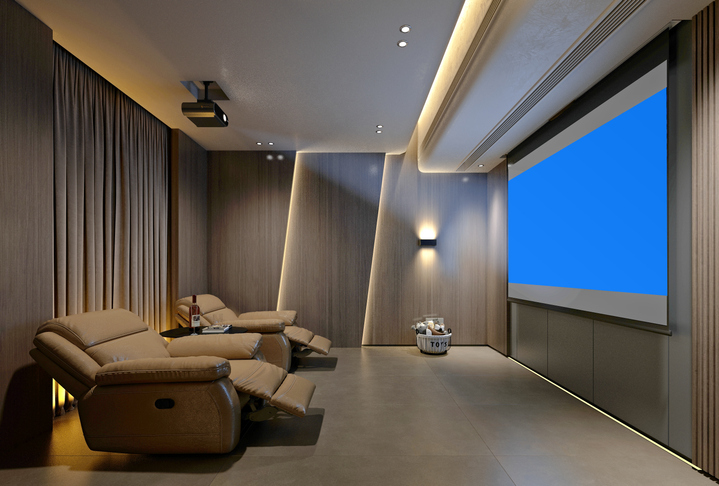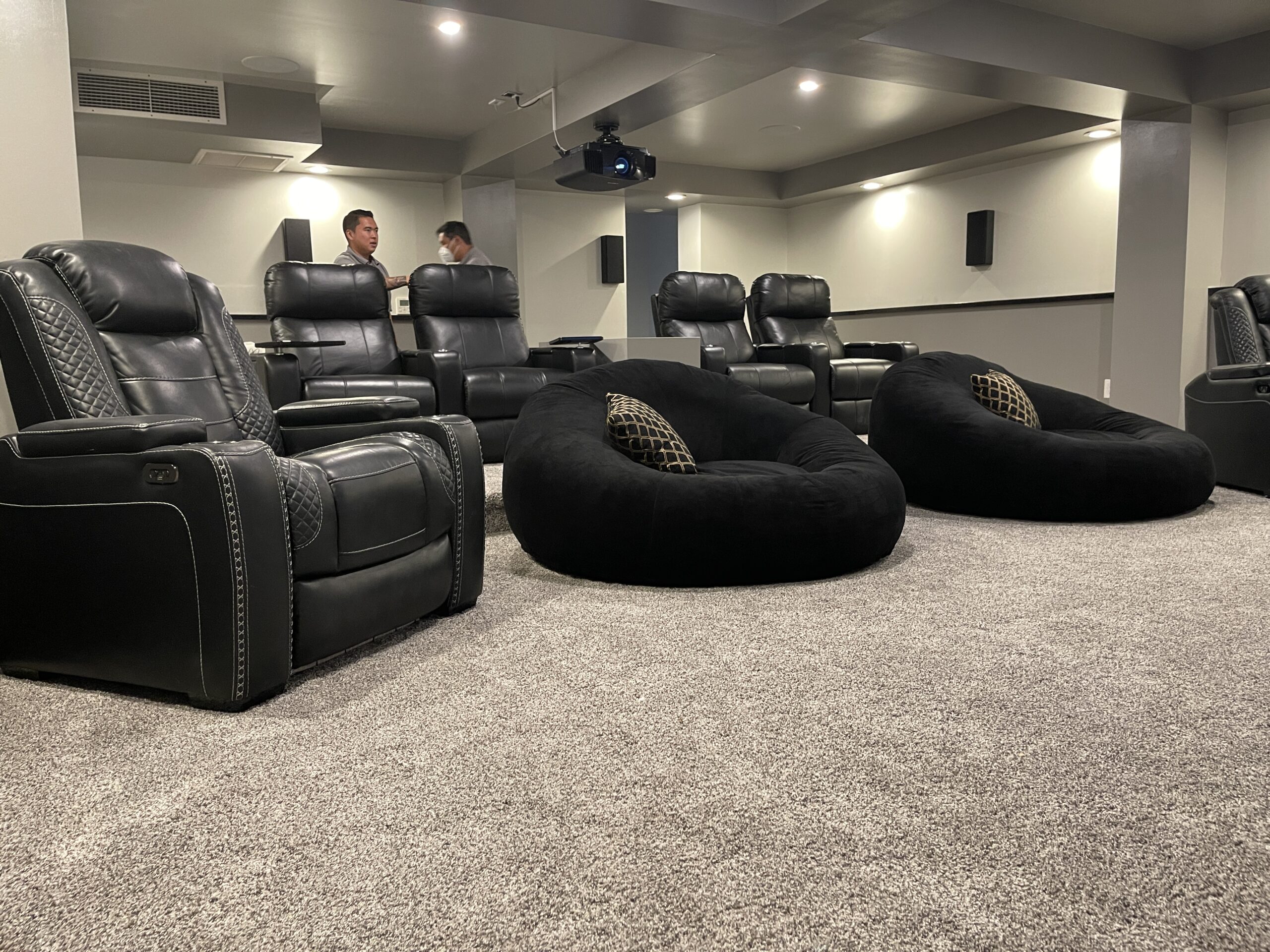Top Home Theater Tampa Installers Offering Personalized Solutions
Top Home Theater Tampa Installers Offering Personalized Solutions
Blog Article
Home Theater 101: Whatever You Required to Know for a Cinematic Experience in the house
Developing a home theater that equals the cinematic experience of an industrial theater involves cautious factor to consider of multiple elements, consisting of display selection, audio systems, and space design. Each component plays a critical role in attaining the desired atmosphere and functionality. Whether you are considering the excellent screen size or the ins and outs of border sound, understanding these principles is essential. As we check out these important components, it ends up being obvious that the selections made can significantly influence your overall viewing experience, leaving one to ponder how these decisions will certainly form your personal cinema.
Picking the Right Screen
When establishing up a home cinema, choosing the best display can make or break the viewing experience - tampa home theater. The display functions as the focal point of your setup, affecting picture high quality, seeing angles, and overall visual. Trick aspects to think about include display resolution, kind, and size
First, establish the suitable screen size based on your area dimensions and seating distance. Next off, choose in between various display types, such as fixed-frame, motorized, or retracting displays, each offering distinct advantages.
Resolution is an additional vital variable. For an absolutely immersive experience, consider a screen developed for 4K and even 8K web content, making sure intensity and clarity. Furthermore, take into consideration the screen's gain, which affects brightness and contrast; a greater gain can improve illumination in well-lit spaces, while a reduced gain might be better for darker settings.
Picking Sound Equipment
Audio tools is an important component of any home movie theater system, considerably boosting the total watching experience. The selection of audio gear can identify the deepness, quality, and immersion of audio, critical for creating a cinematic atmosphere.
When selecting audio equipment, think about a surround sound system, which usually consists of a receiver, numerous audio speakers, and a speaker. A 5.1 or 7.1 network system is advised, where the first number represents the audio speakers and the 2nd the speaker, providing an immersive soundscape. The receiver is the heart of the system, managing sound and video clip signals, and need to sustain modern-day styles like Dolby Atmos for an improved spatial experience.
Quality speakers are vital; look for models that supply a balanced sound profile with excellent bass response. Floor-standing speakers can generate richer noise, while bookshelf options save room. In addition, think about wireless choices for convenience of installment, although wired systems usually deliver superior performance.

Optimal Seating Plans
Creating an optimal home theater experience pivots significantly on ideal seating arrangements. The arrangement of seats plays a critical role in both comfort and seeing quality, straight impacting the general cinematic experience.
First, consider the display size and watching range. A typical guideline is to place seats at a range about 1.5 to 2.5 times the angled dimension of the screen. This ensures an immersive experience without straining the eyes.
Next, altitude is important. The back rows must be higher than the front to stay clear of blockages if your seats is in a tiered format. For level seating, guarantee that the front row is not also close to the display, and that every person has a clear line of sight.
In addition, take into consideration the arrangement in regards to social characteristics. Group seating my link can enhance the public experience, while private seats may be favored for individual viewing.

Finally, prioritize convenience with ergonomic seating that supports extended viewing periods. Including recliner chairs or supported seats can substantially improve the experience, making the home cinema a preferred destination for both entertainment and leisure.
Lighting and Atmosphere
Reliable lighting and setting are vital parts of a properly designed home theater, as they significantly influence the checking out experience. The appropriate lighting can enhance the motion picture feeling, while poor choices can diminish it. For optimal results, think about a split lights strategy that consists of ambient, job, and accent lighting.
Ambient lighting supplies basic lighting, ensuring that the area is not completely dark, which can strain the eyes. Dimmer switches are extremely advised, enabling changes based upon the material being checked out. Job lights, such as wall surface sconces or flooring lights, supplies functional lighting for tasks like analysis or browsing the room without interfering with the total atmosphere.
Accent illumination can be used to highlight architectural functions or create focal points, including deepness and passion to the area. LED strip lights behind screens or along racks can provide a refined glow that boosts the aesthetic experience without overwhelming the audience.

Wiring and Installation Tips
A tactical circuitry setup is crucial for achieving optimum efficiency in your home theater system. Correct circuitry not only makes certain top quality audio and video clip signals however additionally enhances the total visual of your space. Begin by drawing up your layout, identifying where each part will certainly be placed, including your display, speakers, and receiver.
When choosing wires, prioritize top notch, suitably assessed wiring to lower signal loss. HDMI cords need to be made use of for video links, while speaker cord ought to match the specifications of your audio speakers and amplifier. Go with in-wall ranked wires to adhere to safety criteria and maintain a tidy look.

Verdict
In summary, creating an outstanding home cinema experience calls for cautious factor to consider of numerous components, consisting of screen option, audio tools, seating setups, lights, and wiring. By prioritizing these variables, a cinematic atmosphere can be successfully replicated, permitting for immersive checking out experiences that measure up to traditional theater settings.
Developing a home cinema that rivals the cinematic experience of a business theater includes mindful consideration of numerous components, consisting of screen selection, view publisher site sound systems, and room layout.When setting up a home theater, picking the appropriate display can make or break the seeing experience. Next, pick in between different screen types, such as fixed-frame, mechanized, or retracting screens, each offering distinct advantages. For a genuinely immersive experience, think about a screen made for 4K or also 8K content, guaranteeing intensity and quality.In summary, creating a remarkable home movie theater experience requires mindful consideration of various aspects, consisting of screen option, audio devices, seating arrangements, lights, and wiring.
Report this page